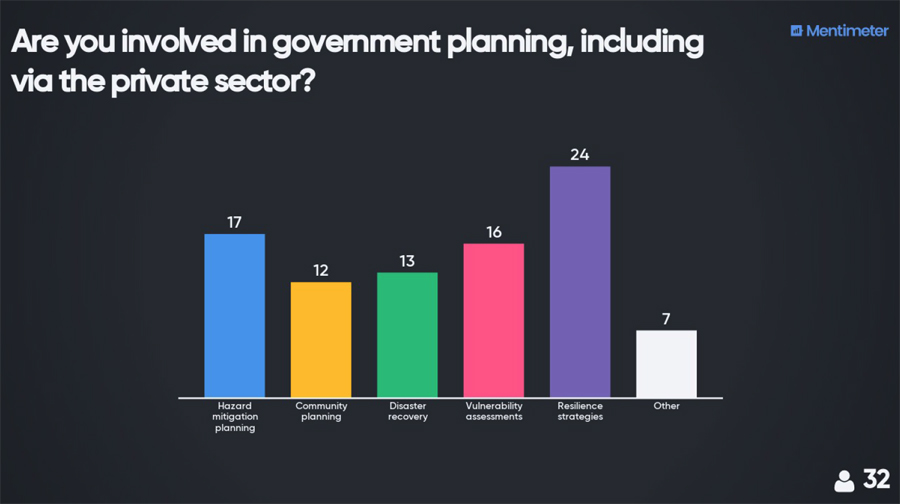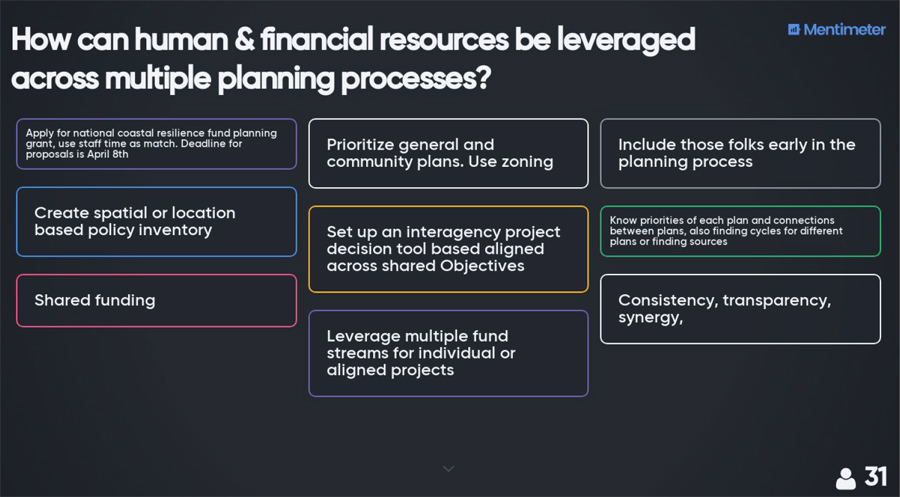Connecting the Dots for Coastal Resiliency in Hawaiʻi – the 2020 PRiMO Conference
by Katia Chikasuye
Attending a new conference is always an exciting opportunity to learn and connect! As a new E. Gordon Grau Coastal and Marine Resource Management Fellow, this was my first time at the annual Pacific Risk Management ‘Ohana (PRiMO) conference, which focuses on community-resilience and protecting Pacific Island communities from natural hazards. Conference attendance is diverse and includes heads of state, representatives from businesses, nonprofit organizations, and environmental groups, as well as concerned citizens, who come together to make connections, discuss ongoing initiatives, and design action plans. The PRiMO 2020 conference this year had a theme of “Building a Resilient Pacific,” and Hawaiʻi Sea Grant shared tools and ongoing projects at several sessions throughout the week.

I was involved with one of the Sea Grant presentations, a collaborative, talk-story session titled “Connecting the Dots in Hawaiʻi Government: Who’s Doing What with Resiliency and How Can We Leverage Each Other’s Work.” This session was developed by Hawaiʻi Sea Grant Extension Agents Tara Owens, Ruby Pap, and Brad Romine. Tara is a Coastal Processes Extension Agent within the Maui County Planning Department, Ruby is a Coastal Land Use Extension Agent within the Kauai County Planning Department, and Brad is a Coastal Management and Resilience Specialist Extension Faculty and liaison to the Hawaiʻi Office of Conservation and Coastal Lands. Funding was provided by an ongoing NOAA Regional Coastal Resilience grant to examine inter-agency coordination for climate change adaptation and to provide updates of ongoing work that integrates hazards and resilience considerations into planning. My contribution to the session involved coordinating logistics and integrating audience participation. To make the session more engaging and interactive, the online polling platform Metimeter was used to ask the audience questions at the beginning and end of the session.
The goal of the session was to bring together county officials to discuss how community resilience and climate adaptation are being integrated across a range of plans and strategies, and how inter-agency coordination can be improved to avoid redundancy and capitalize on each other’s work. The objective was to capture emerging best practices for improving resilience across a range of state and county plans. Topics included improving disaster recovery preparedness, addressing sea level rise in community plans, and conducting community-based vulnerability assessments.

Four local panelists participated and shared their expertise: Pam Eaton with the Maui County Planning Department, Douglas Le with the Hawaiʻi County Lava Recovery Office, David Kennard with the Kauaʻi Emergency Management Agency, and Matthew Gonser with the City and County of Honolulu Office of Climate Change, Sustainability, and Resilience. These county officials are well-seasoned in their respective fields, and were asked to focus on different aspects and types of plans. As a guiding framework for the discussion, we asked panelists to consider these broader questions in their individual talks: How do you interface with these other plans and agencies? What challenges do you face? What opportunities do you see? What does Hawaiʻi need?
Some of the challenges have a tangible solution. For example, because post-emergency proclamations suspend numerous permitting processes in Maui County to allow for quick reconstruction, necessary infrastructure adaptations to improve resiliency are often ignored. Changing county policy to require permits for recovery infrastructure would go a long way towards increasing community resilience on Maui. All panelists spoke to the difficulties of interagency coordination, from competing or specialized interests that may interfere with policy adoption to a lack of mandate enforcement or follow-through on plan updates and strategic actions. Many of these challenges stem from the fact that the ongoing environmental changes are unprecedented in human history, with no successful legal framework to follow in terms of incorporating climate change and sea level rise considerations into planning.
Despite these issues, there is evidence of greater interagency coordination and considerations for climate resiliency. For example, Maui County has proposed new shoreline setbacks that account for future shoreline erosion by adopting a policy that is based on the modeled exposure to erosion in the Hawaiʻi Sea Level Rise Viewer. The ongoing lava recovery efforts on Hawaiʻi Island offer unique opportunities for planning and developing more resilient communities. Hawai‘i County’s Kīlauea eruption recovery team is currently producing three documents that will work synergistically: a Recovery Strategic Plan, a Volcanic Risk Assessment, and an Economic Recovery Plan. Also shared during the session was the Coastal Plan Alignment Compass Handbook from California. This resource identifies ways that multiple planning processes can be better aligned to help ensure resilience for California’s coastal communities to climate change, a convenient case-study for Hawaiʻi to adapt and build-upon.
Discussion then shifted to a talk-story Q&A with the audience, and a series of targeted questions were asked via Menti. While initially uncertain about how successful incorporating this digital tool would be, the results showed that most participants enjoyed replying to open-ended questions, and did so quite seriously. The breadth and depth of some of the answers provided in such a short time were surprising but gratifying. Some of the more thoughtful responses to the question “How can human and financial resources be leveraged across multiple planning processes?” included: setting up an interagency project decision tool aligned across shared objectives, inviting stakeholders to assess projects across similar criteria as decision makers (use the same language), and creating spatial- or location-based policy inventory. There was clearly significant, collective knowledge amongst the audience. Their contact information was collected to remain connected through sharing progress and best management practices in resiliency planning. Several attendees commented on the quality of the panel and ensuing discussion at the end of the session, a rewarding success for our team and an excellent first-time, but definitely not the last, PRiMO experience for myself.


